Abstract
Orientation: The global financial markets have been severely affected by the influence of the Coronavirus Disease 2019 (COVID-19). Across the board, most of the financial markets have experienced a very sharp decrease in trade as a consequence of this pandemic. Investors sometimes choose to include such assets in order to diversify portfolios and also at the same time distribute risk away from the usual financial markets. As the global economy begun to falter under the influence of COVID-19, the value of holding fine art as an alternative investment increased.
Research purpose: This article examines the implications of the impact of COVID-19 on the financial markets and the global art markets. This article explores the real impact of COVID-19 on the respective stock markets and then compared it against the global art price index, both in European euro and American dollar.
Motivation for the study: The impact of COVID-19 will have numerous spill over effects into other sectors of the economy, one such sector being the market for fine art. Fine art as an investment item has many desirable qualities to an investor and can act as an alternative investment asset because of its ability to hold value.
Research approach/design and method: Five financial markets are analysed in this study, namely the German DAX, the American Dow Jones, the Japanese Nikkei and the London Stock Exchange and the Johannesburg Stock Exchange (JSE), Financial Times Stock Exchange (FTSE), by using a combination of market simulations and forecast techniques, including Auto-Regressive Integrated Moving Average (ARIMA), Generalized Auto-Regressive Conditional Heteroskedasticity (GARCH), Monte Carlo simulation and Minimum Mean Square Error (MMSE) techniques. The real impact of COVID-19 is assessed on the respective stock markets and then compared against the global art price index, both in European euro and American dollar.
Main findings: The findings show that there is a significant positive influence on holding fine art as an alternative investment, especially as the levels of market risk increase because of COVID-19.
Practical/managerial implications: The impact of an economic or social crisis has led to a diversification of trade in investments. Similar to currency portfolios been diverted into gold trade to mitigate risk due to political or social unrest, equity trading has mitigated some risk into alternative forms of investment.
Contribution/value-add: This article highlights the nature of portfolio diversification into fine art as an alternative investment, brought about due to extreme market conditions.
Keywords: COVID-19; Dax; Dow Jones; FTSE/JSE; Nikkei; London Stock Exchange; fine art; financial markets; Global Art Price Index.
Introduction
Many of the global financial markets have been severely impacted by the influence of the Coronavirus Disease 2019 (COVID-19). What started out as a regional concern grew rapidly and unexpectedly into a global crisis, taking the lives of thousands of people across the world, disrupting businesses and households, whilst applying intense pressure on government administration and economic policies. According to the World Trade Organization (WTO), the unavoidable declines in trade and output will have severe consequences for both households and businesses. The United Nations Conference of Trade and Development refers to this as ‘… dramatic, even in comparison to the 2008 global financial crisis’ (UNCTAD 2020:3).
On 10 January 2020, the World Health Organization (WHO) released a statement to the effect that based on available evidence at the time, there was:
… no clear evidence of human-to-human transmission. Based on experience with SARS and MERS and known modes of transmission of respiratory viruses, infection and prevention control guidance were published to protect health workers recommending droplet and contact precautions when caring for patients, and airborne precautions for aerosol generating procedures conducted by health workers.
Twelve days later, on 22 January, the WHO Director General convened an Emergency Committee under the International Health Regulations of 2005 to assess whether the outbreak constituted a public health emergency of international concern (WHO 2020b).
The independent members of the emergency committee drawn from member states from around the world could not reach a consensus based on the evidence available at the time. An extension was requested and the emergency committee was reconvened within 10 days (WHO 2020c). On 27 February, the WHO in conjunction with the WTO stated that the tourism industry needed to be assessed as regards the threat to public health and local risk. This analysis would address every part of the tourism value chain, and its findings considered urgently to reduce the spread across the world.
On 28 February 2020, the WHO released the Report of the WHO-China Joint Mission on Coronavirus Disease 2019, including the opinions of 25 local and international experts. This report detailed issues regarding the nature of the virus, the outbreak, transmission dynamics, disease progression and severity of COVID-19 (WHO 2020b). At this stage a cumulative total of 75 465 COVID-19 cases had been reported in China (WHO 2020c).
Whilst the world was grappling with measures to ensure a suitable strategy to protect the health of their citizens, an additional concern was the ability to supply food, which was becoming a concern. The WHO mentioned on 30 March 2020 that there would be increasing levels of uncertainty about food availability and trade restrictions. It was assumed then that trade reactions will possibly alter the balance of food supplies, resulting in price spikes and increased price volatility. Similarly, it was also deemed critical for food producers and food workers at processing and retail level to be protected in order to minimise the spread of the disease within this sector whilst maintaining food supply chains. It was advised that governments should take extra measures to protect consumers, in particular the most vulnerable such as the poor, the elderly and those dependent on national and social support (WHO 2020d). By 7 March 2020, over 100 000 cases had been reported by the WHO. The WHO proposed that countries should take responsibility for controlling the spread of the virus through the implementation of robust containment and control activities (WHO 2020e).
According to the WTO, the COVID-19 pandemic represents an unprecedented disruption to the global economy and world trade, as production and consumption are scaled back across the globe. It is estimated that world trade will fall by between 13% and 32% in 20201 as the COVID-19 pandemic disrupts normal economic activity far in excess of the trade slump, which occurred during the financial crisis of 2008 (WTO 2020b). The WTO reported that restrictions on the movement of people and the impact of social distancing on business will have a direct impact on labour supply, transport and travel similar to that of the financial crisis of 2008. The WTO goes on to mention that whole economic sectors have been shut down, including hotels, restaurants, non-essential retail trade, tourism and significant shares of manufacturing2 and food production. According to the World Economic Forum (WEF 2020), COVID-19 will be responsible for over 20 million job losses in the United States alone.
According to reports from the United Nations (UN), COVID-19 has impacted food production in many developing countries, such as Zimbabwe and South Sudan as some of the worst hit in the region. Estimated food production in 2020 would be a quarter of that of 2018 for Zimbabwe, with additional environmental pressures merely exacerbating the pressure (UN 2020e). This is made worse by the rapidly intensifying economic effects of COVID-19 on workers, which are quickly proving to be far worse than the effects of the 2008–2009 financial crisis. Job cutbacks equivalent to nearly 200m full-time workers are expected (UN 2020b). In a report by the United Nations Conference on Trade and Development Agency (UNCTAD), the economic uncertainty because of COVID-19 will likely cost the global economy over 1 trillion USD in 2020 (UN 2020d).
The real impact of COVID-19 on the stock markets will mostly be on the heavily indebted developing countries, particularly commodity exporters.3 This is because of the weaker export returns linked to a stronger United States (US) dollar, and investors seeking safe havens for their money. It is almost certain that commodity prices will rise as the global economy slows down, which means that commodity exporters are especially vulnerable (UN 2020d). Emerging economies, in particular, have seen a growth in private debt in reserve currencies and increased levels of investment by non-resident investors, foreign banks and other financial institutions. In addition, there has been an increase in the transfer of central government debt from official to private creditors and shadow-banking actors (UNCTAD 2020), which has added to the vulnerability of the markets overall.
According to UNCTAD (2020), net portfolio outflows, both debt and equity, from main emerging economies amounted to $59 billion in the months, January 2009 to April 2020 since the outbreak of COVID-19 in March 2020. This appeared to be more than double the portfolio outflows experienced by the same countries in the immediate aftermath of the global financial crisis of 2008.4 The drop in net portfolio outflows from developing countries, compared with other recent crisis episodes, also appears to be much larger during this period (UNCTAD 2020).
It is from this perspective that this research article attempts to analyse the impact of COVID-19 on the Dax, Dow Jones, the Nikkei, the London Stock exchange (LSE) and the Financial Times Stock Exchange/Johannesburg Stock Exchange (FTSE/JSE). The methodology adopted includes developing several modelling techniques for each of the markets and then estimating and forecasting possible developments within the market. The analogy will then examine the Global Art Price Index and estimate the impact of market trends on the Index, develop a possible forecast scenario and use this to determine the relationship between COVID-19 and the change in investor behaviour within the market for fine art.
Appropriating the markets
For the purpose of this article, the term ‘stock market’ refers to one of the major stock market indexes, such as the Dax, the Dow Jones (Dow), the Nikkei 225 (Nik225), the JSE/FTSE (FTSE) and the LSE. Because it’s hard to track every single stock, these indexes include a section of the stock market and for the purpose of this study their performance is viewed as a representative of their respective market. The choice of indicators is based on a regional overview that spans across the world, namely (Germany) Europe, (USA) North America, (Japan) Far East, (England) UK and (South Africa) Africa.
This study analyses five stock markets, namely the Dax, the Dow Jones, the Nikkei, the JSE/FTSE and the LSE. The Dax (Deutscher Aktien Index) is referred to as a blue chip5 stock market index consisting of the 30 major German companies trading on the Frankfurt Stock Exchange (Investopedia 2019a). The Dow Jones Industrial Average, or simply, the Dow Jones, is an index that tracks 30 large, publicly owned blue chip companies trading on the New York Stock Exchange and the NASDAQ (Investopedia 2020b). The FTSE/JSE Africa Index Series resulted from a joint venture between the JSE Limited and the FTSE Group. The JSE/FTSE series brought with it a sound methodology for calculating indices and classifying the African market sector (JSE 2020a). TheLSE is considered to be the primary stock exchange in the United Kingdom. The LSE originated in 1773. In 1973, the regional exchanges were merged to form the Stock Exchange of Great Britain and Ireland, which a little later was renamed the London Stock Exchange (Investopedia 2019c). The Nikkei 225, sometimes referred to as the Nikkei, is Japan’s leading and most-respected index of Japanese stocks. It is composed of Japan’s top 225 blue chip companies traded on the Tokyo Stock Exchange (Investopedia 2019d).
There is a strong positive relationship between the individual stock exchanges, indicating a fair distribution of trade between the markets (see Figure 1). Between 2008 the post 2008 financial crisis) and 2010, the respective stock markets showed a gradual recovery. Given the impact of Europe’s Sovereign Debt Crisis between 2010 and 2012, peaking in 2012 (Investopedia 2020e), the markets exhibited a gradual but consistent growth trend (Menickella 2020). By 2018, markets across the board began to slow, and by 2020, the impact of COVID-19 was most noticeable, with all the markets losing vast amounts of value very rapidly. Much of this is attributed to disruptions in trade between countries impacting on supply chains and further impacting on different businesses and sectors (Menickella 2020). According to Coy (2020), this led to a ‘scramble for liquidity’, as investors reassessed their risk position within a cascading market environment Coy (2020).
 |
FIGURE 1: Graphical representation of the Dax, Dow Jones Industrial Average, Financial Times Stock Exchange/Johannesburg Stock Exchange All Share, Nikkei 225 and the London Stock Exchange. |
|
Modelling the markets, using autoregressive integrated moving average and generalised autoregressive conditional heteroscedasticity to better understand the market dynamics
The impact of the crisis has had some varied impacts within the overall markets. Accordingly, several strategies are applied in this article to each of the markets analysed to determine the relationship and impact of COVID-19 on the financial markets. Firstly, an Auto Regressive Integrated Moving Average (ARIMA) model is developed and used to simulate the market. On the basis of this a Monte Carlo and a minimum mean square error (MMSE) simulation is applied and compared. Thereafter, a generalized autoregressive conditional heteroscedasticity (GARCH) model is developed and the market is estimated by using data segmentation to estimate the impact with and without COVID-19. The GARCH method models the variance at a time step as a function of the residual errors from a ‘zero mean’ process. ‘Auto regressive integrated moving average’ is a model that can describe a given time series based on its own past values using its own lagged data (t-1…t- n) and includes information on lagged forecast errors, so as to predict possible forecast values (Brownlee 2018). This approach breaks away from the ordinary least squares approach (Bialynicka-Birula 2018) in that it attempts to examine the dynamic nature of the market by considering the nature of the variance of the market and developing possible forecast simulations from there.
The GARCH model is used to estimate the volatility of returns for stocks, bonds and market indices. The GARCH model is an extension of the ARCH model that incorporates a moving average component together with the autoregressive component. Whilst the model includes lag variance terms together with lag residual errors from a mean process, it’s the introduction of a moving average component that allows the model the ability to deal with conditional change in variance over time as well as changes in the time-dependent variance (Brownlee 2018).
The ARIMA model proposed in 1970 by Box and Jenkins is a model-building methodology with three integrative steps: model identification, estimation of parameters and diagnostic checking of the model and using the structure of the model for forecasting (Radek & Sekni 2012). Market data are obtained from IRESS and Artprice.com, using weekly or quarterly data, respectively, for each of the data series analysed. A total of 583 data points are considered and spans between 2009 and 2020 are used. Several tests are performed on the data, including an Augmented Dicky Fuller Test for the unit root, the Engels ARCH Test for heteroscedasticity and the Ljung–Box Q Test for autocorrelation.
A log transformation of the data is used to remove an exponential trend. First-order differencing is applied on the time series consecutively and tested for stationarity using the Kwiatkowski, Phillips, Schmidt and Shin (KPSS) test for a unit root in the univariate time series y.
An ARIMA (1, 2) model is estimated in the following the equation:
A GARCH (1, 1) model using the following equation:
The art market can be perceived as an alternative form of investment within the stock markets (Baur 2019), especially for those investors trying to diversify the risk component of their portfolios (Aye et al. 2017). A note must be made regarding the issue of portfolio diversification. It was found that when investors develop a suitable portfolio spread, the allocation to an illiquid asset (such as art) is lower when the illiquid nature of the asset is taken into account (Kräussl, Verwijmeren & Korteweg 2016).
The Global Art Price Index6 is estimated in US dollars and European euros so as to determine the sensitivity specific to each of the currencies within the market. The Global Art Price Index is measured using quarterly data from 1998.
In the case of the Global Art Price Index, a GARCH (3, 5) model is applied:



Additional tests are performed on the residuals, including the Ljung–Box Q Test for autocorrelation and Engle’s ARCH test for heteroscedasticity to determine whether the model has captured all the significant structure in the data. Residual histograms and Squared Residual Autocorrelation are plotted to test the value of the model.
Simulations are done using a Monte Carlo simulation (or multiple probability simulation) technique and a MMSE technique. The Monte Carlo simulations are used to model the probability of different outcomes in a process that cannot easily be predicted because of the intervention of random variables and is particularly useful to assess the impact of risk and uncertainty in prediction and forecasting models (Kenten 2019b). The MMSE is used in this article to support the Monte Carlo simulation. It emphasises minimising the expected or mean value of the square of the error and refers to an estimation with quadratic loss function and where the sequence of observations is not necessarily independent. In other words, the method is more sensitive to noise collected in the market data (Oppenheim & Verghese 2010).
It must be noted that the simulations in this article are prepared using the best possible economic reasoning, yet, ‘although simulations often yield messy data, the information they provide is epistemologically just as relevant as the information provided by an analytical proof’ (Lehtinen & Kuorikoski 2007). Therefore, all hypothesis tests are undertaken with diligence so as to ensure the validity and significance of the data, unless explicitly specified, in which case an additional note to that effect is discussed.
Estimating the impact of COVID-19 on the financial markets
The financial markets are modelled using a GARCH (1, 1) model for volatility. This is because volatility shocks within the markets are quite persistent and the impact of old news on volatility is significant. The GARCH process allows the conditional variance of variables to be dependent upon previous lags, the first lag of the squared residual from the mean equation and present news about the volatility from the previous period (Ugurlu, Thalassinos & Muratoglu 2014).
According to Mamun Miah and Azizur Rahman (2016), the volatility in financial markets attracts a great deal of concern from investors as it can be used as a measurement of risk. The high volatility of returns in financial markets may discourage investors from investing in stock markets and hence lead to increasing levels of uncertainty within the markets. So we need to estimate the appropriate volatility model to capture the volatility (Miah & Rahman 2016). By applying the GARCH model of different lag orders to model the volatility of stock returns using the Akaike information criteria (AIC) and Bayesian information criteria (BIC) to select the best GARCH model, it was found that the GARCH (1,1) was the best model with which to model volatility in this study.
In conjunction with this, an ARIMA (1, 2, 0) process is applied as a dynamic model for estimation and forecasting. It is used to determine the possible forecast position of the market before the impact of COVID-19, and this is then compared with the current estimated position of the market with COVID-19. The segmentation technique used here includes a pre-sample period, an estimate period and a forecast period. The estimation period is used as a pre-sample to initialise the autoregressive term. A set of predictor data is used at the end of the estimation period as a pre-sample to initialise the moving average component. The effects of the predictor variables on the forecasted responses are created by specifying future predictor data. In order to model the regression component where COVID-19 is still relatively unknown7 to the model, the pre-sample response data includes market data from January 2009 to December 20128, followed by the pre-sample data used for forecasting from December 2012 to September 20179 and, finally, the forecast period data from September 2017 to September 201910.
The first column of Figure 2 highlights the impact of COVID-19 on all of the markets. In almost all the cases, the drop in market performance is very large. However, the real difference between expected outcome and the influence of COVID-19 is quite remarkable. The second column of Figure 2 indicates both the ‘sensitivity’ (possible rate of growth) to COVID-19 as indicated by the slope of the estimate, and also indicates the point of market impact where it crosses over the plotted market data.
 |
FIGURE 2: Graphical representation of the Dax, Dow Jones Industrial Average, Financial Times Stock Exchange/Johannesburg Stock Exchange All Share, Nikkei 225 and the London Stock Exchange highlighting in column 1 the ‘Inferred’ and ‘Forecasted Impact’ using a generalised autoregressive conditional heteroscedasticity model. An autoregressive integrated moving average model is applied in column 2, highlighting the ‘Sensitivity’ and ‘Impact’ of COVID-19 on the respective stock market indices. (a) Impact of conditional variances on the Dax, (b) Dax impact covid 19, (c) Impact of conditional variances on Dow Jones, (d) Dow impact covid 19, (e) Impact of conditional variances model on FTSE, (f) FTSE impact covid 19, (g) Impact of conditional variances on the Nikkei, (h) Nikkei 225 impact covid 19, (i) Impact of conditional variances on the LSE, (j) London stock exchange impact covid 19. |
|
 |
FIGURE 2 (Continues...): Graphical representation of the Dax, Dow Jones Industrial Average, Financial Times Stock Exchange/Johannesburg Stock Exchange All Share, Nikkei 225 and the London Stock Exchange highlighting in column 1 the ‘Inferred’ and ‘Forecasted Impact’ using a generalised autoregressive conditional heteroscedasticity model. An autoregressive integrated moving average model is applied in column 2, highlighting the ‘Sensitivity’ and ‘Impact’ of COVID-19 on the respective stock market indices. (a) Impact of conditional variances on the Dax, (b) Dax impact covid 19, (c) Impact of conditional variances on Dow Jones, (d) Dow impact covid 19, (e) Impact of conditional variances model on FTSE, (f) FTSE impact covid 19, (g) Impact of conditional variances on the Nikkei, (h) Nikkei 225 impact covid 19, (i) Impact of conditional variances on the LSE, (j) London stock exchange impact covid 19. |
|
COVID-19 appears to have impacted the Dax a little earlier than the other markets. However, the overall decrease in market performance follows a lag effect, possibly as a result of active economic measures (Schulz 2020). The Dow Jones industrial average was already showing signs of an economic slowdown within the market when the impact of COVID-19 took effect. This is possibly because of trade rigidities and political concerns (Berkmen et al. 2012). The downward impact on the Dow Jones is quite robust. The FTSE/JSE shows possible lower rates of market recovery than the Dax or the Dow Jones, which could be attributed to regional or geographical disparities (JSE 2020b). The Nikkei appears to be very sensitive and the overall influence appears to be more direct than that of many of the other markets (Hyerczyk 2020). The data indicate a slightly delayed impact of COVID-19 on the LSE, which also indicates a lower degree of possible market recovery compared with many of the other markets, which in part may be attributed to BREXIT (Kippin, Knight & Bergen 2018).
Overall, it’s clear that the impact of COVID-19 will have implications for the market economies. The GARCH modelling is useful when analysing market risk, which is evident within the volatile markets. This can be seen in the degree of volatility experienced within each of the markets indicating the level of uncertainty and risk (Miah & Rahman 2016). The relationship between risk and market volatility is clearly visible in Figure 3. The rationale for such behaviour is that there are some risks investors may consider, that is, if the benefits from taking the risks exceed the possible costs. An optimal behaviour approach may consider which risks are worth taking, and which risks are not worth taking. This is the central paradigm of this article, and it leads to a consideration of what type of portfolio spread to consider. Investors take risks to achieve rewards, but not all risks are equally rewarded. Both the risks and the rewards are in the future, so it is the expectation of loss that is balanced against the expectation of reward. Thus, we optimise our behaviour, and in particular our portfolio, to maximise rewards and minimise risks (Engle 2007).
 |
FIGURE 3: Graphical representation of the Dax, Dow Jones Industrial Average, Financial Times Stock Exchange/Johannesburg Stock Exchange All Share, Nikkei 225 and the London Stock Exchange highlighted in column 1 the Market Performance and in column 2, the ‘Returns to Investment’ and ‘Inferred Volatility’ in the market and the impact of COVID-19 on the respective stock market indices. (a) Dax, (b) Returns and inferred volatility, (c) Dow Jones, (d) Returns and inferred volatility, (e) FTSE, (f) Returns and inferred volatility, (g) Nikkei 225, (h) Returns and inferred volatility, (i) LSE, (j) Returns and inferred volatility. |
|
 |
FIGURE 3 (Continues...): Graphical representation of the Dax, Dow Jones Industrial Average, Financial Times Stock Exchange/Johannesburg Stock Exchange All Share, Nikkei 225 and the London Stock Exchange highlighted in column 1 the Market Performance and in column 2, the ‘Returns to Investment’ and ‘Inferred Volatility’ in the market and the impact of COVID-19 on the respective stock market indices. (a) Dax, (b) Returns and inferred volatility, (c) Dow Jones, (d) Returns and inferred volatility, (e) FTSE, (f) Returns and inferred volatility, (g) Nikkei 225, (h) Returns and inferred volatility, (i) LSE, (j) Returns and inferred volatility. |
|
Trading against volatility within a stock market experiencing exogenous shocks may not be the most efficient strategy, as Cao, Deng and Honggang (2010) noted. For high frequency data, the market is inefficient for short-term trading strategies, but when the interval increases, the market presents as more efficient (Cao et al. 2010). In such cases there is a tendency for investors to seek markets with a lower level of volatility and lower level of market risk.
Levels of volatility increase as the impact of COVID-19 becomes apparent, as can be seen in the very latter part of each market in Figure 3. As the markets begin to turn downward, the level of volatility as per the second column in Figure 3 increases quite considerably. This change in the latter levels of volatility also corresponds with Figure 4, where the volatility and the impact of COVID-19 on the market seem to show a high degree of correlation. Risk aversion of the investor is a large factor driving such volatility. Risk aversion provides an incentive for investors to abandon a risky investment. Moreover, within an environment of increasing uncertainty, some investors will spur others on to behave in the way they do through a process of ‘hysteresis’. This creates an impact on the broader market behaviour. In other words, as risk aversion increases, the economic environment becomes more volatile (Chronopoulos, De Reyck & Siddiqui 2011).
 |
FIGURE 4: Correlation matrix indicating the level of correlation, which exists between these markets. |
|
Then, the high degree of market correlation can be explained through a combination of market behaviour (trends) and the respective institutional behaviour across the financial markets. Typically, this high correlation is linked to the availability of specific financial products, which are compliant with certain specific industries and the pricing and risk management of these products. Mostly, pricing principles are derived from a set of assumptions regarding the approved process for valuing the underlying assets together with an equilibrium criterion and create similar portfolio hedging to support the inherent risk within the market. The simultaneous pursuit of identical micro strategies leads to synchronous behaviour and therein lies an additional degree of built-in contagion. From these assumptions, most institutions provide similar information (Colander et al. 2009). The challenge here is to avoid the systemic crisis and when this malady of compliant investor behaviour develops, it spurs on the crisis.
Yet within this collective market behaviour, certain individualistic perspectives take hold, inducing tastes and preferences that become both advantageous and creative within the market. Such tastes and preferences are specifically geared to reduce risk through portfolio diversification. Art has been considered an efficient way to diversify portfolio investments during times of financial uncertainty (Aye et al. 2017). The argument proposed is that art exhibits different risk and return characteristics to conventional investments in other asset classes (Botha, Snowball & Scott 2016).
Introducing the market for fine art
Globally, the levels of investment in fine art have grown in importance amongst financial institutions and investors alike (Mamarbachi, Day & Favato 2008). This becomes apparent in an examination of the change in art sales over the past 30 years. Recently, there has been concern on the part of artists and institutions alike that the trade in art will be affected by the events surrounding COVID-19. Much of the art market has been significantly impacted by COVID-19. These concerns seem quite legitimate when the impact of COVID-19 on the Global Art Price Index is compared with other market indices such as the Nikkei, FTSE, Dax, Dow Jones and the LSE. For some time now, the art market indicators appear to have outperformed many primary financial market indicators, especially between 2002 and 2012, and ending at the peak of the European economic crisis. It was during this period that many investors sought alternative market environments with which to mitigate portfolio risk (Kenton 2020).
The Global Art Price Index appears to indicate a high level of sensitivity to market changes within the global economy. Much of this behavioural response is induced through the broadening and deepening of information, which is becoming available to society via the technology sector. This growth in technology and the role of the distribution of information will impact the art market in different ways. The art market itself has two distinct sectors (Baur 2019), namely the primary and the secondary art sector, each of which has unique behavioural patterns. The primary art market involves the trade of art between the artist, art dealers and the public (Candela & Scorcu 1997). The secondary art sector refers to art traded within formal investment circles such as through auction houses or established art galleries (Singer 1978). Whilst there is a distinct transmission mechanism that exists between the primary and the secondary sectors, a more flexible interconnectivity approach seems to prevail within the markets, most likely driven by the dynamic links between ideas, exhibitions, artists and works resulting from the proliferation of the Internet and social networks (Art Market Insight 2020). The primary and the secondary art market sector is related to each other through a transmission process (Baur 2017), and despite the lack of market transparency, illiquidity and the high asset costs, generally have limited participation in each other’s markets (Hernandez 2013).
Figure 5 highlights the impact of the ‘European Debt Crisis’ between 2010 and 2012 on the Global Art Price Index. As the markets were negatively impacted during this time (Kenton 2019), the Global Art Price Index showed an increase in value, indicated by the upward movement of the index between 2010 and 2012. However, the level of market volatility between this period also increased quite considerably. This is partially supported by the idea that investors are seeking stable alternative investments. From 2015 onwards, until the final quarter of 2019, the Global Art Price Index appears to be decreasing in activity, which turns sharply in the first quarter of 2020, mainly because of the influence of the secondary art market.
 |
FIGURE 5: Global Art Price Index in United States Dollars European Euros 1998–2020. |
|
The secondary art market includes art market activity traded through auction houses and leading art galleries and other art institutions. It’s interesting to note that the major auction houses have plenty of experience with online sales and are perfectly equipped to switch their prestige sales into the digital sphere. In 2019, online sales had already increased significantly, with Sotheby’s notably posting a 25% increase (Art Market Insight 2020). In order to comply with government recommendations for containing the spread of the virus, museums, art fairs, art galleries and cultural centres have had to take immediate action and comply with the new rule of compulsory closure, often bringing the culture industry to an almost complete standstill. Exhibitions (commercial and non-commercial) and public auction sales have therefore been cancelled or postponed, often to as yet unspecified dates, reflecting the difficulty of changing the planning for such events (Art Market Insight 2020).
The Global Art Price Index (API) provided by Artprice.com, benchmarked both in euros and dollars, is modelled in this article using an ARIMA (1, 2, 0) analysis. The analysis is then used to forecast the possible growth in the Artprice index, and then analyse this in relation to other market indicators. Figure 6 presents the API, both in United States dollars (USD) and in European euro (EUR).
 |
FIGURE 6: Applying a Monte Carlo analysis to the Global Art Price Index (API) in United States Dollars and European Euros and examining the degree of market volatility and returns using quarterly data from 1998 to 2020. (a) API US forecast and 95% forecast interval, (b), API EU forecast and 95% forecast interval, (c) API US Monte Carlo and a minimum mean square error (MMSE) and Monte Carlo forecasts and (d) API EU MMSE and Monte Carlo forecasts. |
|
From Figure 6, which considers trade in fine art in both USD (column 1) and EUR (column 2), the art market appears to be showing possible signs of forecasted market growth. This is in line with the findings by McAndrew (2012), Kraeussl and Weihenkamp (2012) and Baur and Els (2015) as to what happened previously in 2008 and 2012 and is now happening again in 2020.
Figure 7a simulates possible growth paths for the Global Art Price Index in USD, whilst Figure 7b simulates possible growth paths using an ARIMA (1, 2, 0) model. This simulation applies the conditional variance, or the variance of a random variable given the value of the Global Art Price Index as the scedastic function. Given the possibility of random factors, an examination of the level of conditional variance within the ARIMA model simulates a ‘reasonable’ prediction of the outcomes of the model in the given possible scenarios.
 |
FIGURE 7a: Examining possible scenarios for the Global Art Price Index in United States Dollars. (a) Art price index US, (b) Variance API US, (c) Conditional variance 10 period esrimate, (d) 10 period simulation, (e) Conditional variance 5 period forecast, (f) 5 period forecast. |
|
 |
FIGURE 7b: European Euros using a 10-period estimation simulating 5 possible paths using quarterly data from 1998 to 2020. (a) Art price index EU, (b) Variance API EU, (c) Conditional variance 10 period esrimate, (d) 10 period simulation, (e) Conditional variance 5 period forecast, (f) 5 period forecast. |
|
From this model, the Global Art Price Index in USD shows a greater tendency towards growth than in EUR, with the likelihood of lower levels of variance from the mean compared with that in EUR. In other words, growth in the Global Art Price Index in USD shows greater market stability within the market for fine art than that in EUR, and possibly a faster rate of market acceleration and possible growth than that of EUR, assuming that all other things are equal, ‘ceteris paribus’.
The relationship between the Global Art Price Index in USD and the Global Art Price Index in EUR shows very strong positive correlations, up from previous studies indicated by Baur and Els (2014). The strongest relationship in USD is between the LSE and the API, followed by the Dow Jones. The Global Art Price Index in EUR has a slightly different perspective, showing the Dow Jones and the LSE to have a much lower correlation coefficient.11
The largest share of portfolio diversification comes from the LSE, which is also influenced by the impact of BREXIT (Arts Council England 2018), combined with COVID-19 (Figure 8). The United States has also been adversely affected by COVID-19 (Lempinen 2020), and this has driven portfolio diversification into the arts sector (Charlin & Cifuentes 2017). This is then followed by the Nikkei225 (Ji 2020), Dax (Papas 2020) and lastly by the FTSE/JSE (Hollington 2020).
 |
FIGURE 8: Correlation matrix examining the relationship between the markets and the Global Art Price Index using quarterly data from 1998 to 2020. |
|
Conclusion
COVID-19 has had a significant impact on the financial markets. Only a few months ago the world was preoccupied with the impact of new trade agreements, uncertainty over BREXIT, possible conflict in North Korea and the like. The arrival of COVID-19 changed perspectives and resulted in a rush for security in what suddenly became an uncertain global market.
Rising uncertainty in the stock markets drives investors to diversify portfolios and to mitigate the level of risk through investing in the market for fine art. The market for fine art has certain key properties, one of which is the ability of the market to store value. The rise in the Global Art Price Index is a clear indication that the cultural sector has taken an important place within a market, which is experiencing large amounts of uncertainty across the market spectrum.
Historically speaking, using fine art as an alternative investment is not new. Fine art has been used as a preserve of wealth, preserve of culture and as an icon of economic strength. The Global Art Market Report of 2020 emphasised that robust growth of the global art market, stressing key contributing factors in the global dynamics of the industry. The Global Art Market Report went further to emphasise the transactional behaviours of the high-net-worth art collector’s sector (Chinsee 2020). As such, there has been a shift in portfolios into the art market, highlighting the importance of fine art as an alternative investment during periods of huge economic uncertainty.
This article examined the impact of portfolio diversification on the market for fine art. This was done by examining a number of geographically distributed stock markets from across the world. Generalised autoregressive conditional heteroscedasticity and ARIMA models were developed and applied to estimate and determine possible market scenarios as a result of COVID-19.
The analysis shows that the art market is most likely to continue to grow as global stock markets remain risky because of the COVID-19 virus. This study indicates that, with little uncertainty, a ‘bearish’ global stock market has the power to release the ‘bulls’ within the fragile market for fine art.
Acknowledgements
Competing interests
The author has declared that no competing interests exist.
Authors’ contributions
The author declares that he is the sole author of this research article.
Ethical consideration
This article followed all ethical standards for research without direct contact with human or animal subjects.
Funding information
This research received no specific grant from any funding agency in the public, commercial, or not-for-profit sectors.
Data availability statement
Data sharing is not applicable to this article as no new data were created or analysed in this study.
Disclaimer
The views and opinions expressed in this article are those of the author and do not necessarily reflect the official policy or position of any affiliated agency of authors.
References
Art Market Insight, 2020, The art market reacts to Covid-19, viewed 14 April 2020, from https://www.artprice.com/artmarketinsight/the-art-market-reacts-to-covid-19.
Artprice.com, 2020, Econometric methodology, Artprice.com, Paris.
Arts Council England, 2018, Impact of Brexit on the arts and culture sector, ICM Unlimited, London.
Aye, G.C., Gil-Alana, L.A., Gupta, R. & Wohar, M.E., 2017, ‘The efficiency of the art market: Evidence from variance ratio tests, linear and nonlinear fractional integration approaches’, International Review of Economics and Finance 51(1), 283–294. https://doi.org/10.1016/j.iref.2017.06.003
Baur, P. & Els, G., 2014, ‘Using a behavioural approach to analyse the suitability of cartoons as a vehicle for teaching and learning in finance’, African Journal of Hospitality, Tourism and Leisure 3(1), 1–14.
Baur, P. & Els, G., 2015, ‘Mapping the relationship between the primary and the secondary art market’, African Journal of Hospitality Tourism and Leasure 8(2), 536–549. https://doi.org/10.4102/jef.v8i2.107
Baur, P.W., 2017, ‘Disempowering institutional behaviour by exploring the risks associated with investing into the fine art market’, African Journal of Hospitality, Tourism and Leisure 6(4), 1–20.
Baur, P.W., 2019, ‘Analysing the impact of BREXIT on artists careers within the United Kingdom by examining the market for “fine art”’, African Journal of Hospitality Tourism and Leisure 8(4), 1–23.
Berkmen, P., Gelos, G., Rennhack, R. & Walsh, J., 2012, ‘The global financial crisis: Explaining cross-country differences in the output impact’, Journal of International Money and Finance 31(1), 42–59. https://doi.org/10.1016/j.jimonfin.2011.11.002
Bialynicka-Birula, J., 2018, ‘Changes in the global art market’, Oeconomia Copernicana 9(4), 695–714. https://doi.org/10.24136/oc.2018.034
Botha, F., Snowball, J. & Scott, B., 2016, ‘Art investment as a portfolio diversification strategy in South Africa’, South African Journal of Economic and Management Sciences 19(3), 358–369.
Brownlee, J., 2018, How to model volatility with ARCH and GARCH for time series forecasting in Python, viewed 11 April 2020, from https://machinelearningmastery.com/develop-arch-and-garch-models-for-time-series-forecasting-in-python/.
Candela, G. & Scorcu, A., 1997, ‘A price index for art market auctions’, Journal of Cultural Economics 21(3), 175–196.
Cao, S.N., Deng, J. & Li, H., 2010, ‘Prospect theory and risk appetite: An application to traders’ strategies in the financial market’, Journal of Economic Interaction and Coordination 5(2), 249–259. https://doi.org/10.1007/s11403-010-0073-7
Charlin, V. & Cifuentes, A., 2017, ‘On the uncertainty of art market returns’, Finance Research Letters 21(1), 186–189. https://doi.org/10.1016/j.frl.2016.12.005
Chinsee, G., 2020, 2020 Art Basel global market report reveals leveled growth, with emerging collectors a new focus, viewed 15 April 2020, from https://www.artnews.com/art-news/market/global-art-market-report-2020-overview-1202680041/.
Chronopoulos, M., De Reyck, B. & Siddiqui, A., 2011, ‘Optimal investment under operational flexibility, risk aversion, and uncertainty’, European Journal of Operational Research 213(1), 221–237. https://doi.org/10.1016/j.ejor.2011.03.007
Colander, D., Goldberg, M., Hass, A., Juselius, K., Kirman, A., Lux, T. & Sloth, B., 2009, ‘The financial crisis and the systemic failure of the economics profession’, Critical Review 21(2–3), 249–267. https://doi.org/10.1080/08913810902934109
Coy, P., 2020, The great Coronavirus crash of 2020 is different, viewed 11 April 2020, from https://www.bloomberg.com/news/articles/2020-03-19/the-great-coronavirus-crash-of-2020-is-different.
Engle, R., 2007, ‘Risk and volatility: Econometric models and financial practice risk and volatility’, The American Review 94(3), 405–420.
Hernandez, C., 2013, ‘The art of investing in art’, in J.P.Morgan - Thought 3Q 2013, viewed n.d., from https://www.jpmorgan.com/jpmpdf/1320620625096.pdf
Hollington, M., 2020, South Africa’s world-class fight against Covid19: The data tells the story, viewed 15 April 2020, from https://www.dailymaverick.co.za/article/2020-04-15-south-africas-world-class-fight-against-covid19-the-data-tells-the-story/.
Hyerczyk, J., 2020, Lower, demand for safe-haven Yen rises as coronavirus fears increase, viewed 13 April 2020, from https://www.nasdaq.com/articles/japans-nikkei-index-lower-demand-for-safe-haven-yen-rises-as-coronavirus-fears-increase.
Investopedia, 2019a, Blue-chip index, viewed 11 April 2020, from https://www.investopedia.com/terms/b/blue-chip-index.asp.
Investopedia, 2020b, Dow Jones Industrial Average (DJIA), viewed 11 April 2020, from https://www.investopedia.com/terms/d/djia.asp.
Investopedia, 2019c, London Stock Exchange (LSE), viewed 11 April 2020, from https://www.investopedia.com/terms/l/lse.asp.
Investopedia, 2019d, Nikkei, viewed 11 April 2020, from https://www.investopedia.com/terms/n/nikkei.asp.
Investopedia, 2020e, European Sovereign debt crisis, viewed 11 April 2020, from https://www.investopedia.com/terms/e/european-sovereign-debt-crisis.asp.link
IRESS, 2009, Indices, viewed 04 April 2020, from http://www.expert.inetbfa.com.
IRESS, 2020, McGregor BFA, viewed 13 April 2020, from http://research.mcgregorbfa.com/Default.aspx.
Ji, J., 2020, Nikkei dives in global rout amid COVID-19 fears, viewed 15 April 2020, from https://www.japantimes.co.jp/news/2020/03/13/business/financial-markets/nikkei-dives-global-rout-covid-19/#.XpbBHcgzb4Y.
JSE, 2020a, Johannesburg Stock Exchange, viewed 11 April 2020, from http://www.jse.co.za.
JSE, 2020b, JSE ensures continued trading amid covid-19, viewed 13 April 2020, from https://www.jse.co.za/articles/jse-ensures-continued-trading-amid-covid-19.
Kenton, W., 2020, European Sovereign debt crisis, viewed 13 April 2020, from https://www.investopedia.com/terms/e/european-sovereign-debt-crisis.asp.
Kenton, W., 2019, Monte Carlo simulation, viewed 11 April 2020, from https://www.investopedia.com/terms/m/montecarlosimulation.asp.
Kippin, H., Knight, A. & Bergen, J., 2018, The social Brexit: How fractious times could be a catalist for collaborative social change in the UK, Collaborate CIC, London.
Kraeussl, R. & Wiehenkamp, C., 2012, ‘A call on art investments’, Review of Derivatives Research 15(1), 1–23. https://doi.org/10.1007/s11147-011-9061-x
Kräussl, R., Verwijmeren, P. & Korteweg, A., 2016, ‘Does it pay to invest in art? A selection-corrected returns perspective’, Review of Financial Studies 29(4), 1–68. https://doi.org/10.1093/rfs/hhv062
Lehtinen, A. & Kuorikoski, J., 2007, ‘Computing the perfect model: Why economists shun simulation’, Philosophy of Science 74(3), 304–329. https://doi.org/10.1086/522359
Lempinen, E., 2020, COVID-19: Economic impact, human solutions, viewed 15 April 2020, from https://news.berkeley.edu/2020/04/10/covid-19-economic-impact-human-solutions/.
Mamarbachi, R., Day, M. & Favato, G., 2008, ‘Art as an alternative investment asset’, Journal of Financial Transformation 24(1), 63–71.
McAndrew, C., 2012, The international art market in 2011: Observations on the art trade over 25 years, TEFAF.
Menickella, B., 2020, COVID-19 worldwide: The Pandemic’s impact on the economy and markets, viewed 11 April 2020, from https://www.forbes.com/sites/brianmenickella/2020/04/08/covid-19-worldwide-the-pandemics-impact-on-the-economy-and-markets/#1afe9db228c3.
Miah, M. & Rahman, A., 2016, ‘Modelling volatility of daily stock returns: Is GARCH(1,1) enough?’, American Scientific Research Journal for Engineering, Technology, and Sciences 18(1), 29–39.
Oppenheim, A. & Verghese, G., 2010, ‘Estimation with minimum mean square error’, in http://ocw.mit.edu (ed.), Introduction to communication, control, and signal processing, MIT OpenCourseWare, Massachusetts.
Papas, N., 2020, DAX index slumps on Covid-19 outbreak, viewed 15 April 2020, from https://www.investingcube.com/dax-index-slumps-on-covid-19-outbreak/.
Radek, H. & Sekni, J., 2012, ‘ARIMA model selection in Matlab’, in Proceedings of 30th International conference Mathematical Methods in Economics ARIMA, Karviná, Czech Republic, 11–13 September 2012.
Schulz, F., 2020, Merkel: Germany well-equipped against COVID-19, viewed 13 April 2020, from https://www.euractiv.com/section/coronavirus/news/merkel-germany-well-equipped-against-covid-19/.
Sebastian, A., 2020, ‘After a market crash like no other, the recovery for share prices will look a lot different too, says Alex Sebastian’, in This is Money, viewed n.d., from https://www.thisismoney.co.uk/money/markets/article-8199801/After-stock-market-crash-like-no-climb-look-lot-different-too.html
Singer, L., 1978, ‘Microeconomics of the art market’, Journal of Cultural Economics 2(1), 21–40.
Ugurlu, E., Thalassinos, E. & Muratoglu, Y., 2014, ‘Modeling volatility in the stock markets using GARCH models: European emerging economies and Turkey’, International Journal in Economics and Business Administration 2(3), 72–87.
United Nations (UN), 2020a, World economic situation and prospects, United Nations.
UN, 2020b, COVID-19: Impact could cause equivalent of 195 million job losses, says ILO chief, viewed 10 April 2020, from https://news.un.org/en/story/2020/04/1061322.
UN, 2020c, COVID-19: The global food supply chain is holding up, for now, viewed 10 April 2020, from https://news.un.org/en/story/2020/04/1061032.
UN, 2020d, Coronavirus update: COVID-19 likely to cost economy $1 trillion during 2020, says UN trade agency, viewed 10 April 2020, from https://news.un.org/en/story/2020/03/1059011.
UN, 2020e, Over 10,000 confirmed COVID-19 cases in Africa; Zimbabwe and South Sudan among most vulnerable, viewed 10 April 2020, from https://news.un.org/en/story/2020/04/1061352.
United Nations Conference on Trade and Development (UNCTAD), 2020, The COVID-19 Shock to Developing Countries: Towards a ‘whatever it takes’ programme for the two-thirds of the worlds population being left behind, United Nations Conference on Trade and Development.
World Economic Forum (WEF), 2020, Coronavirus: 15 million Americans claim unemployment benefits in just 3 weeks, viewed 11 April 2020, from https://www.weforum.org/agenda/2020/04/united-states-jobs-unemployment-coronavirus-covid19-econamy.
World Health Organization (WHO), 2020a, ‘Please quarantine politicising COVID-19’: Summary, viewed 13 April 2020, https://www.who.int/emergencies/diseases/novel-coronavirus-2019/events-as-they-happen.
WHO, 2020b, Report of the WHO-China Joint Mission on Coronavirus Disease 2019 (COVID-19), World Health Organisation, Geneva.
WHO, 2020c, WHO timeline – COVID-19, viewed 08 April 2020, from https://www.who.int/news-room/detail/08-04-2020-who-timeline---covid-19.
WHO, 2020d, Joint statement by QU Dongyu, Tedros Adhanom Ghebreyesus and Roberto Azevedo, Directors-General of the Food and Agriculture Organization of the United Nations (FAO), the World Health Organization (WHO) and the World Trade Organization (WTO), World Health Organisation, Geneva.
WHO, 2020e, WHO statement on cases of COVID-19 surpassing 100 000, World Health Organisation, Geneva.
WHO, 2020f, Timeline: WHO’s COVID-19 response, viewed 09 April 2020, from https://www.who.int/news-room/detail/29-06-2020-covidtimeline.
World Trade Organization (WTO), 2020a, Trade set to plunge as COVID-19 pandemic upends global economy, World Trade Organization, Geneva.
WTO, 2020b, Trade set to plunge as COVID-19 pandemic upends global economy, World Trade Organization, Geneva.
Appendix 1
1. Modelling the Dax estimating autoregressive integrated moving average and generalised autoregressive conditional heteroscedasticity for the best possible fit of the respective models.
ARIMA (1, 2, 0) Model (Gaussian distribution):
2. Modelling the Dow Jones estimating autoregressive integrated moving average and generalised autoregressive conditional heteroscedasticity for the best possible fit of the respective models.
ARIMA (1, 2, 0) Model (Gaussian distribution):
GARCH (1, 1) Conditional Variance Model (Gaussian distribution):
3. Modelling the Financial Times Stock Exchange/Johannesburg Stock Exchange estimating autoregressive integrated moving average and generalised autoregressive conditional heteroscedasticity for the best possible fit of the respective models.
ARIMA (1, 2, 0) Model (Gaussian distribution):
GARCH (1, 1) Conditional Variance Model (Gaussian distribution):
4. Modelling Nikkei 225 estimating autoregressive integrated moving average and generalised autoregressive conditional heteroscedasticity for the best possible fit of the respective models.
ARIMA (1, 2, 0) Model (Gaussian distribution):
GARCH (1, 1) Conditional Variance Model (Gaussian distribution):
5. Modelling London Stock Exchange estimating autoregressive integrated moving average and generalised autoregressive conditional heteroscedasticity for the best possible fit of the respective models.
ARIMA (1, 2, 0) Model (Gaussian distribution):
GARCH (1, 1) Conditional Variance Model (Gaussian distribution):
6. Modelling Global Art Price Index USD autoregressive integrated moving average quarterly data.
ARIMA (1, 2, 0) Model (Gaussian distribution):
7. Modelling Global Art Price Index EU autoregressive integrated moving average quarterly data.
ARIMA (1, 2, 0) Model (Gaussian distribution):
Footnotes
1. Given the current circumstances, from the very onset of a crisis of this sort forecasting requires strong assumptions about the progress of the disease and relies more on estimated rather than reported data (WTO 2020a).
2. According to the WTO and the United Nations, trade is likely to fall more steeply in sectors characterised by complex value chain linkages, particularly in electronics and automotive products (UN 2020a). The share of foreign value added in electronics exports was around 10% for the United States, 25% for China, more than 30% for Korea, greater than 40% for Singapore and more than 50% for Mexico, Malaysia and Vietnam. Imports of key production inputs are likely to be interrupted, temporarily impacting on factories in countries such as China, Europe and North America (WTO 2020a). According to the UN, this is likely to also affect food supply chains during the course of 2020 (UN 2020c). Similar changes in trade patterns can be seen in the commodity markets too, for example, oil saw an overall price drop of over 37% during the first few months of 2020, and other major falls in commodities were concentrated in the metals markets (UNCTAD 2020).
3. The stimulus packages applied contain both emergency measures and demand injections. The emergency measures include loans to keep businesses solvent, whilst the demand injections include government purchases of goods and services and direct money transfers to households. The greatest share of the package comprises loans to businesses, which may turn into transfers if they are not repaid. Given the multiplier effect of government spending on gross domestic product, the additional demand in 2020 generated by these measures is an estimated US$395 bn. This is less than one-fifth of what is required (UNCTAD 2020).
4. An estimated US$26.7 bn (UNCTAD 2020).
5. Blue chip refers to companies that provide investors with consistent returns (Investopedia 2019a).
6. The Global Art Price Index is derived from Artprice.com, which traces and monitors the global art price movements of over 700 000 artists (Artprice.com 2020).
7. An exception is made for the LES, where the impact of BREXIT is taken into consideration when modelling estimated outcome.
8. The impact of the European Sovereign Debt Crisis peaked between 2010 and 2012 (Kenton 2020a) (Kenton.a, 2020).
9. Post European Sovereign Debt Crisis.
10. Post ‘Post [two ‘posts’?] European Sovereign Debt Crisis’ and pre-COVID-19. According to WHO (2020), ‘a pneumonia of unknown cause detected in Wuhan, China was first reported to the WHO Country Office in China on 31 December 2019’ (WHO 2020a).
11. The impact of the APIU in USD is very significant, but in terms of the Global Art Price Index in EUR, both the Dax and the FTSE/JSE are not significant. This can be attributed to a more rapid recovery of Germany’s DAX, which has already returned to a technical bull market, according to Sebastian (2020). The rapid policies implemented in South Africa and the geographic disparity between the JSE and the financial markets (Hollington 2020) may have had some bearing on this specific statistic.
|